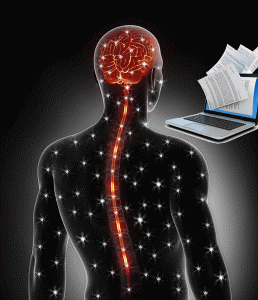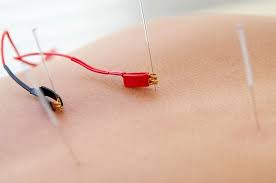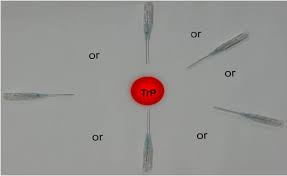Traditional Acupuncture Association Cyprus
FOR HEALTH AND DISEASE
ACUPUNCTURE-ΒΕΛΟΝΙΣΜΟΣ-CYPRUS-ΚΥΠΡΟΣ
WE BRING THE TRUTH FROM DARKNESS TO THE LIGHT
The PTAA is the professional Association representing Traditional Acupuncture & Electro-Acupuncture Practitioners in Cyprus.
WHAT IS ACUPUNCTURE?

IWHAT IS ACUPUNCTURE?
n the Universe the harmonious working of the two forces of YIN & YANG expressed itself in the rising and setting of the sun, the growing and the ripening of crops and in all natural phenomena. An imbalance of YIN and YANG led to droughts , floods and other natural disasters. Similarly within man , it is believed that health depends on the harmonious balance of the two forces of YIN and YANG. The belief in the Yin and Yang harmony is further carried though to the functions within the human body. That is each Yin function is believed to have a balancing yang function in order to maintain balance and harmony.
The Power of Acupuncture
Acupuncture -200 times more powerful than chemical morphine! ... Through its stimulation of the release of endorphins, natural morphine is 200 times more powerful than chemical morphine itself ( principles of anatomy and Physiology Tortora), ...
The intent of acupuncture therapy is to promote health and alleviate pain and suffering. The method by which this is accomplished, though it may seem strange and mysterious to many, has been time tested over thousands of years and continues to be validated today.
In 1995, the U.S. Food and Drug Administration (FDA) classified acupuncture needles as medical instruments and assured their safety and effectiveness.
The medical community for the most part now accepts acupuncture and a growing number of medical schools, such as UCLA, include acupuncture training in their curriculum.
In 1997, the US National Institute of Health issued a report titled: "Acupuncture: The NIH Consensus Statement". It stated that acupuncture is a very useful method for treating many conditions. It acknowledges the side effects of acupuncture are considerably less adverse than when compared to other medical procedures such as surgery or Acupuncture is just one form of therapy used within the coherent system of healing known as Oriental Medicine. Oriental Medicine includes herbology, physical therapy, dietetics and special exercises (such as Tai Chi and Qi Gong), and is a complete medical system unto itself and is not another branch of modern Western medicine. Acupuncture evolved from principles and philosophies unique to Oriental thinking and Oriental Medicine, and is most effectively applied when done in accordance with those principles.


WHAT IS A TRADITIONAL ACUPUNCTURIST?
A Traditional Acupuncturist is a skilled health care professional who apply the theories of Traditional Chinese Medicine in the form of Acupuncture. They care for patients by evaluating and treating pain and illness and in maintaining health and wellness.
Most Acupuncturists work in private clinics. But in today's broadening health care and self care systems you will find them in hospitals, fertility clinics, cancer treatment centers, addictions centers, sports injury treatment centers, health and wellness and spa environ
Acupuncture Mechanisms of Action
Several processes have been proposed to explain acupuncture's effects, primarily those on pain. Acupuncture points are believed to stimulate the central nervous system (the brain and spinal cord) to release chemicals into the muscles, spinal cord, and brain.
These chemicals either change the experience of pain or release other chemicals, such as hormones, that influence the body's self-regulating systems. The biochemical changes may stimulate the body's natural healing abilities and promote physical and emotional well-being. There are three main mechanisms:
Conduction of electromagnetic signals: Western scientists have found evidence that acupuncture points are strategic conductors of electromagnetic signals. Stimulating points along these pathways through acupuncture enables electromagnetic signals to be relayed at a greater rate than under normal conditions. These signals may start the flow of pain-killing biochemicals, such as endorphins, and of immune system cells to specific sites in the body that are injured or vulnerable to disease.
Activation of opioid systems: Research has found that several types of opioids may be released into the central nervous system during acupuncture treatment, thereby reducing pain.
Changes in brain chemistry, sensation, and involuntary body functions: Studies have shown that acupuncture may alter brain chemistry by changing the release of neurotransmitters and neurohormones.
Acupuncture also has been documented to affect the parts of the central nervous system related to sensation and involuntary body functions, such as immune reactions and processes whereby a person's blood pressure, blood flow, and body temperature are regulated.

ACUPUNCTURE THE FASTEST GROWING NATURAL
THERAPEUTIC METHOD IN THE WEST.
Acupuncture -200 times more powerful than chemical morphine!

The importance of rapport
Acupuncturists come in all shapes and sizes, so there will be some variation in how each one relates to you. What they all have in common, however, is that they value the therapeutic relationship and want to have a good rapport with you. They know that the connection between you is the vital key that enables you to open up and talk. If you like and trust your practitioner, you can relax. If you don't feel at ease, the treatment is less likely to go well. Although treatment is not dependent on how well you communicate (it works on children and animals, as you'll see later), good rapport can accelerate its progress.
The first consultation and subsequent treatment
The diagnosis is carried out at the first visit so this session takes longer than the subsequent treatments. During this first consultation, your acupuncturist will ask you lots of questions about yourself. A diagnosis is literally the foundation of treatment. By finding out about you and your health your practitioner can decide on how best to treat you. The resulting treatment plan forms the basis from which your acupuncturist carries out the subsequent treatments.
As each treatment is unique to the individual, this will facilitate the most effective treatment for eac

The diagnosis
Although your acupuncturist will ask you quite a few questions during your diagnosis, her or his main intention is to listen to what you have to say. What she or he asks, however, won't require huge feats of memory from you. As well as asking you about your signs and symptoms, your acupuncturist will be diagnosing the underlying cause of your problem. Everyone's diagnosis is different and your treatments are made to measure especially for you.
You'll be asked questions about your main complaint and your general health. General health involves such things as your sleep, your appetite and your perspiration. Other questions may seem to have less relevance to your health but are no less important. For example, your acupuncturist may ask you about the tastes you prefer, when your energy is better or worse or which seasons you like or dislike. Although these may seem irrelevant, they enable your practitioner to make a holistic and individual diagnosis of you.
As well as asking you these questions, your practitioner will also carry out a physical examination. During this, she or he will feel your pulses and look at your tongue.

In the treatment room
Once you've had a diagnosis you will be ready for a treatment. At the start of each treatment your acupuncturist will find out how you are progressing. She or he will then gather more information by feeling pulses on your wrist and looking at your tongue. Pulse and tongue diagnosis are used to assess your overall health.Your practitioner will also observe your facial color and other signs and will then decide on treatment principles. The treatment principles are the guidelines for treatment and they will enable your acupuncturist to choose the best points to achieve a better balance in your health. Treatment is then carried out using needles and/or moxibustion.
Some important ways to monitor your health

VISITING AN
ACUPUNCTURIST
What Is it Like to Have Treatment? Needles and Moxibustion
Finding out about you and your health
You might now be considering treatment or know someone who might benefit from it. You might also have some more questions. New patients usually have a number of questions and many of these are centered on the needles, for example: 'Do the needles hurt?' 'How are they sterilized?
''How many needles will you use?' and 'How long will the needles be left in?' All of these important questions and many others will be answered by your practitioner on your first visit.
Before going any further, however, let me assure you that acupuncture is not about needles alone. After you've started having acupuncture any worries about needles are likely to fade as you relax and enjoy the experience of the treatment and the resulting health benefits.
Before, during and after Treatment
Visiting an acupuncturist for the first time can be an exhilarating experience. Acupuncture is very safe. It is understandable that hesitations can arise from the unexpected. To ensure your practitioner can make an accurate diagnosis, there are a few things to remember before arriving for your appointment.
- Choose a qualified practitioner.
- Complete a full course of treatment.
- Avoid brushing your teeth and tongue before treatment. Also, try not to consume beverages that may stain your tongue, such as coffee, gum and candies. A proper tongue diagnosis is very important as it leads to cues of possible imbalances.
- Remove all jewelry. This will help the acupuncture in administering treatment.
- Acupuncture usually lasts 20-30 minutes so it is important to use the bathroom prior to treatment.
- Be honest with your acupuncturists when answering questions. All answers are confidential and aide in the diagnosis and treatment.
- Do not consume alcoholic beverages before or after treatment
- It is Important to use caution when your treatment is finished as treatments may cause you to become slightly dizzy.
- After the treatment be sure to rest and relax for the remainder of the day. Do not participate in vigorous exercise and avoid direct exposure to wind and cold.
- Be prepared to see some slight bruises from treatment
- It is important to relax during your treatment. You will benefit most if you allow your mind and body to relax.
THE SEQUENCE OF THE FIRST CONSULTATION:
1. Chat
2. Diagnosis by questioning
3. Physical examination + pulse and tongue diagnosis + other observations
4. Practitioner plans the treatment
5.The treatment is carried out
Sometimes the first treatment doesn't take place until the second visit.
In the treatment room
Once you've had a diagnosis you will be ready for a treatment. At the start of each treatment your acupuncturist will find out how you are progressing. She or he will then gather more information by feeling pulses on your wrist and looking at your tongue. Pulse and tongue diagnosis are used to assess your overall health.Your practitioner will also observe your facial color and other signs and will then decide on treatment principles. The treatment principles are the guidelines for treatment and they will enable your acupuncturist to choose the best points to achieve a better balance in your health. Treatment is then carried out using needles and/or moxibustion.
Some important ways to monitor your health
PULSE DIAGNOSIS
You may be surprised to know that you don't have just one pulse that can be felt on your wrist. Rather you have 12, each of which is associated with a different Organ and has distinct qualities. While studying acupuncture, students practice taking and recording pulses in order to become sensitive to them. Pulse diagnosis forms an important part of both diagnosis and treatment. Having felt your pulses during the diagnosis and at the beginning of treatment, your acupuncturist will usually feel them again a number of times as treatment progresses. This is because the pulses alter during the course of treatment and enable your acupuncturist to monitor how well your treatment is progressing
OBSERVING FACIAL COLOR AND OTHER SIGNS
As well as assessing your pulse and tongue your acupuncturist will also make other observations. These include looking at your facial color, listening to your voice tone and assessing your general emotional balance.

Acupressure: The use of fingers or other device to apply pressure to stimulate acupuncture points.
Electro Acupuncture: Needles are inserted at specific points along the body. The needles are then attached to a device that generates continuous and gentle electric impulses. Proven to assist the overall effect of acupuncture especially with pain and paralysis.

Carrying out the treatment
You will normally lie on a couch when you have treatment, although for some acupuncture points, for example those on your back, you may need to sit on a chair. When your acupuncturist inserts the needles she or he may sometimes withdraw them after a few seconds. Alternatively they may be left in place for up to 20 -30 minutes.
If the needles are left in they won't feel uncomfortable. Most people feel happy to relax once they are inserted and sometimes even go to sleep. As Sarah said when her needles were left in, 'I often go to sleep during the treatment as it's very relaxing and very calming. It makes me feel very good. I often feel as if I'm floating on air afterwards.'
At the end of treatment your practitioner will usually feel your pulses to check that treatment has created greater harmony and balance in your Qi. She or he will then remove the needles. How you feel after treatment varies. Some people feel no immediate change, others a sense of well-being and vitality.
TONGUE DIAGNOSIS
Observing the tongue is a very sophisticated method of diagnosis. It works because the tongue is one of the few places where the inside of the body can be seen on the outside. Your acupuncturist will look at your tongue during your initial visit and at each subsequent treatment. As treatment progresses your tongue body and coating will gradually change, indicating that you are becoming healthier. Different areas of the tongue are connected to the different Organs (see diagram below) and your practitioner will be looking for any cracks, spots, or different colors in these areas.
TREATMENT METHODS
Acupuncture: Acupuncture is the stimulation of Qi energy flow throughout the body through the insertion of thin stainless steel needles into specific sites on the body. Only single use, disposable, sterile needles are used. Needles are disposed of in a biohazard waste container for removal by a regulated biohazard waste service.
Cupping: Cups made of thick glass or plastic are placed over particular points on the body. A vacuum is created within the cup to draw the skin up. This process opens up the skin's pores, which helps to stimulate the flow of blood, balances and realigns the flow of Qi, breaks obstructions and creates a place for toxins in the body to be released. Found helpful in dealing with trigger points, contracted tissue and in some cases of edema.
Laser: Many Acupuncturists use laser in preference to needles to stimulate the energetic response.
Moxibustion: Moxa is formed into a number of shapes; cone, stick, loose wool. The moxa is ignited to warm regions and acupuncture points, intending to stimulate circulation through the points and inducing a smoother flow of the body's energies. Very helpful in chronic fatigue, weakness after long illness and fluid accumulation.
Nutritional recommendations: Acupuncturists are trained in dietary management in accordance with Traditional Chinese Medicine principals. They are also schooled in the use of vitamins, minerals and common herbs.
Planning the treatment
The slant of treatment varies according to your changing needs. Your feedback and your practitioner's observations are crucial when establishing the direction of treatment. This is especially true in the early stages - it's important that the patient and practitioner work as a team.
To clarify how treatment needs to progress, acupuncturists might ask themselves questions, such as: 'How well is this patient improving?' 'Which part of my treatment plan should now take precedence?' 'Is the treatment reaching every level of the patient?'
Later, as the diagnosis becomes established, your acupuncturist will still need to gather accurate information about you.Your relationship with your acupuncturist is vital in order to do this. The direction of the treatment can then be changed according to your needs.
Once your practitioner has planned the treatment, she or he is ready to insert the needles.

